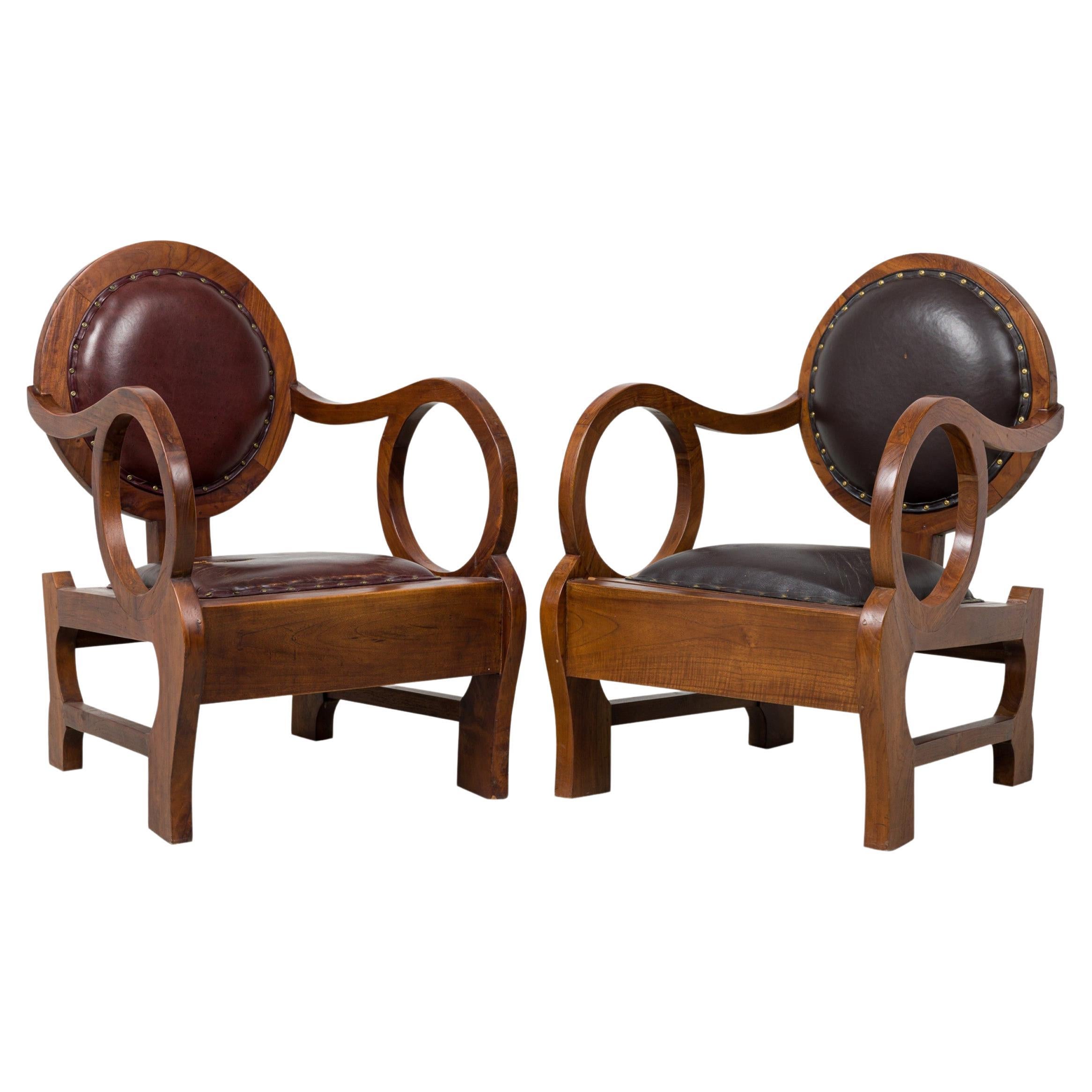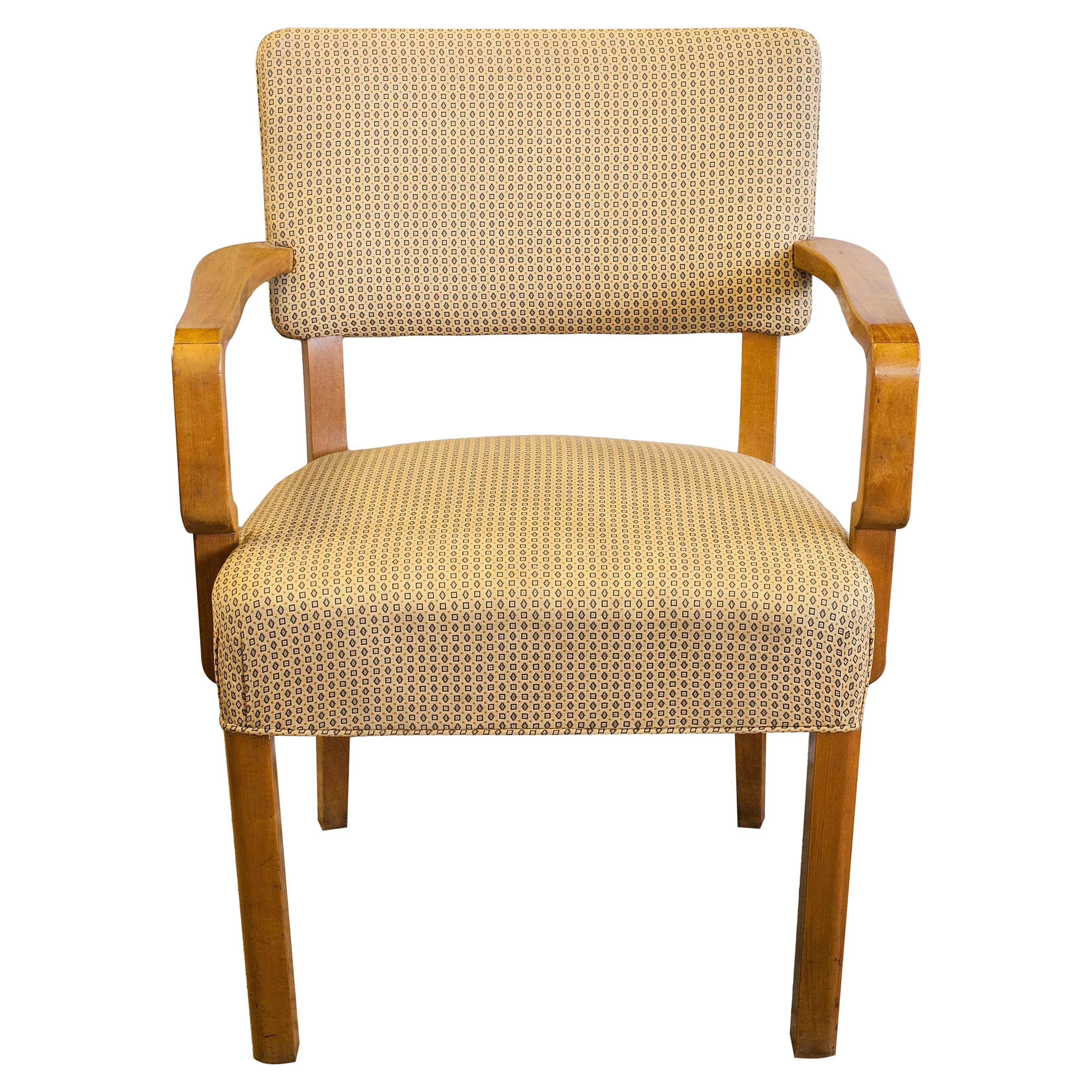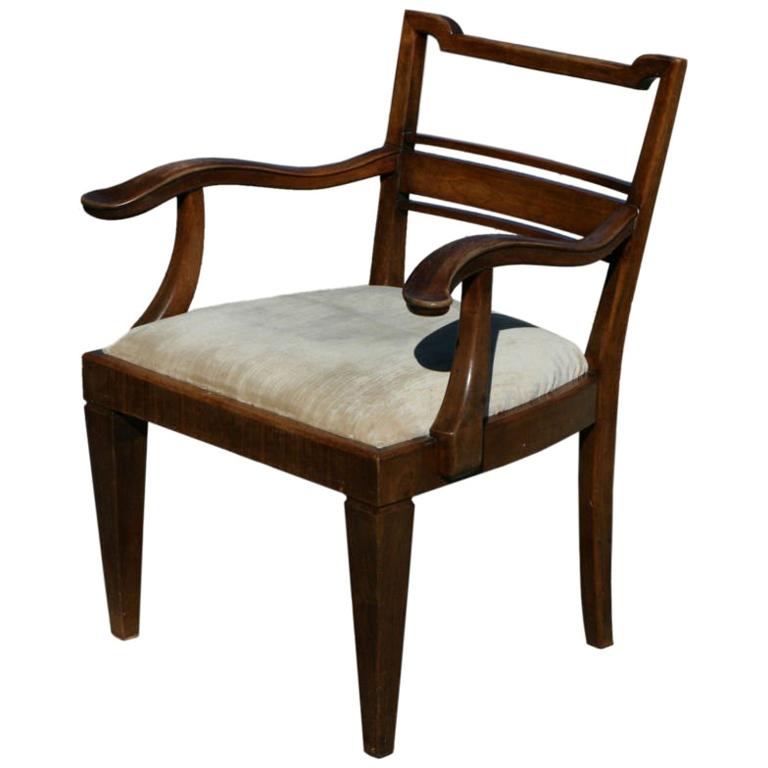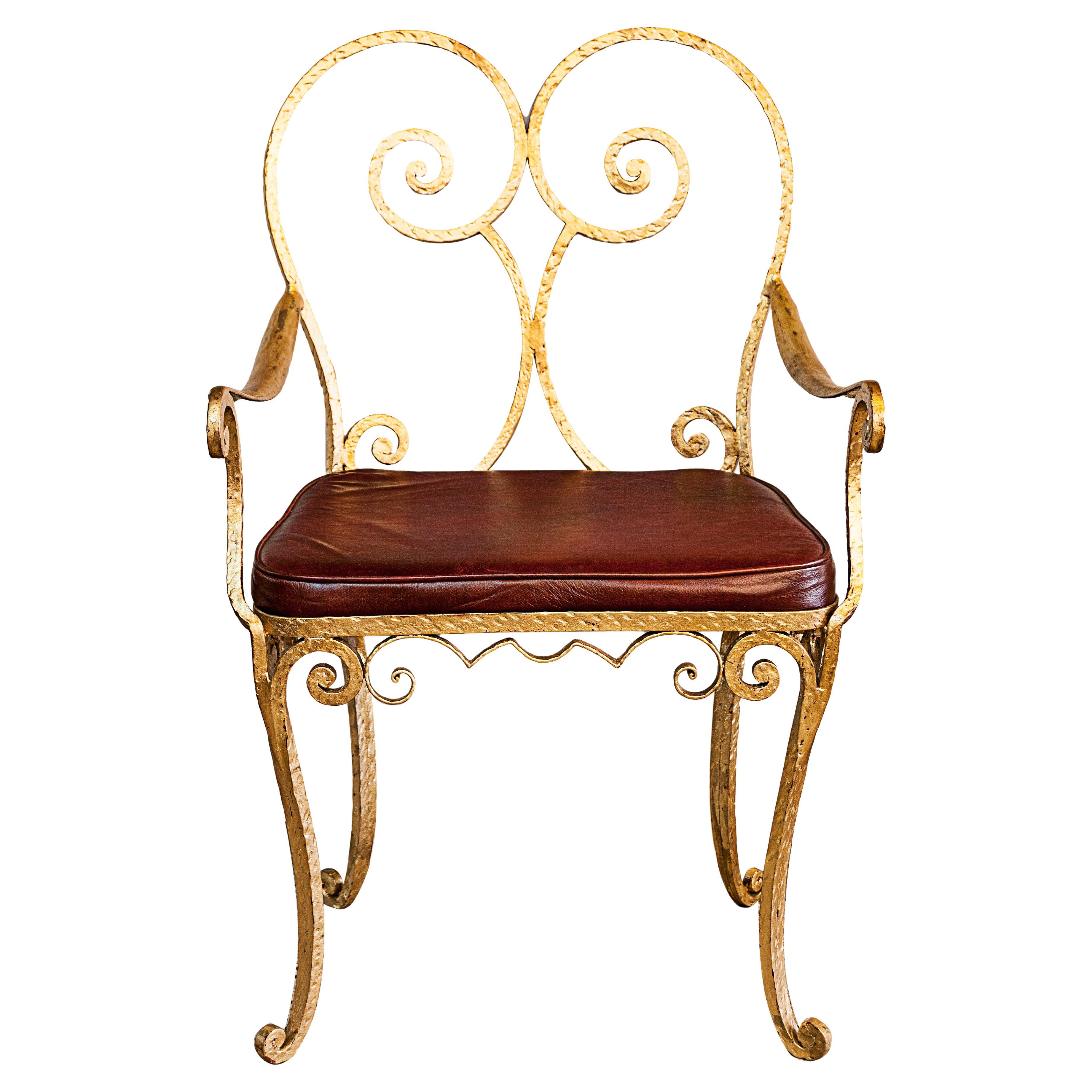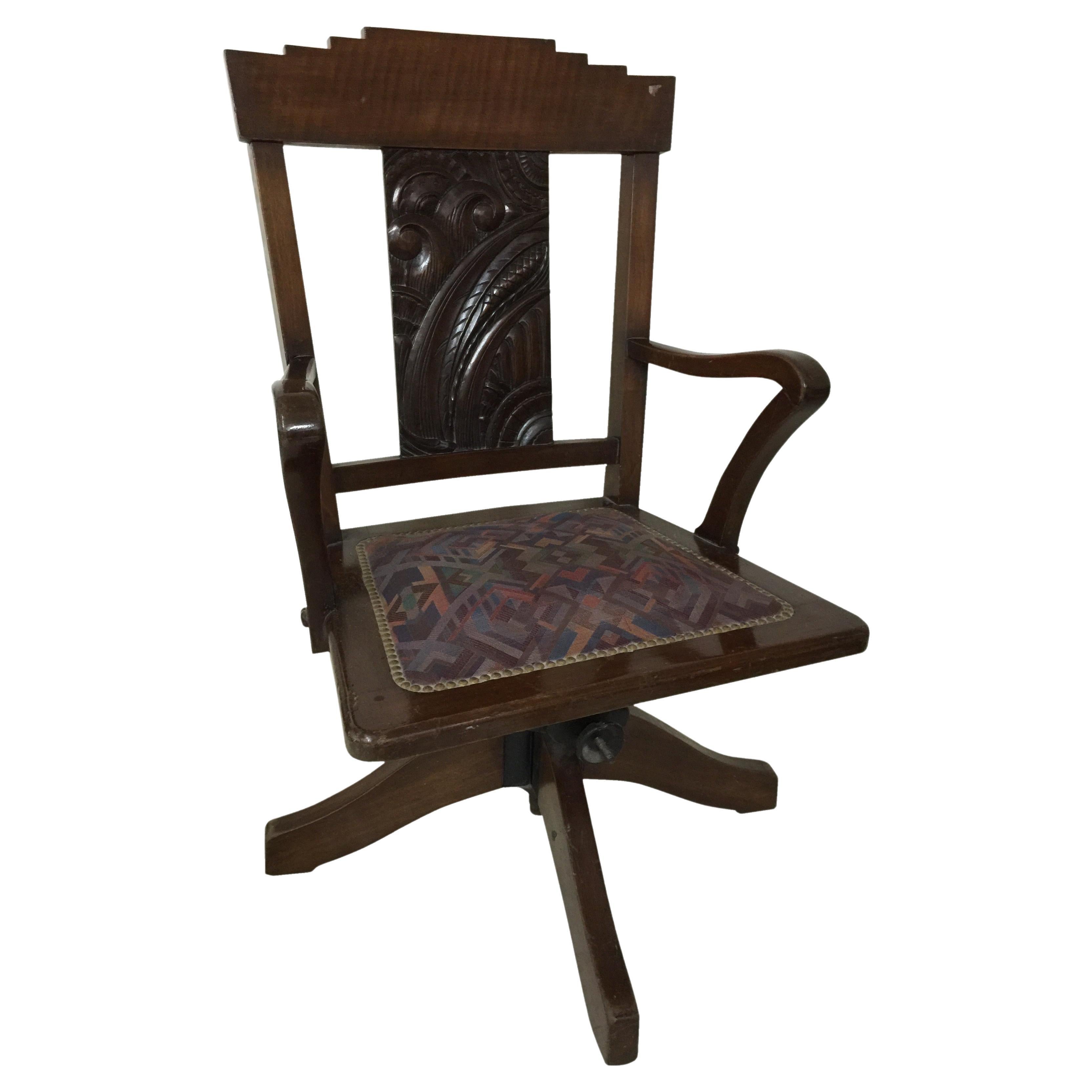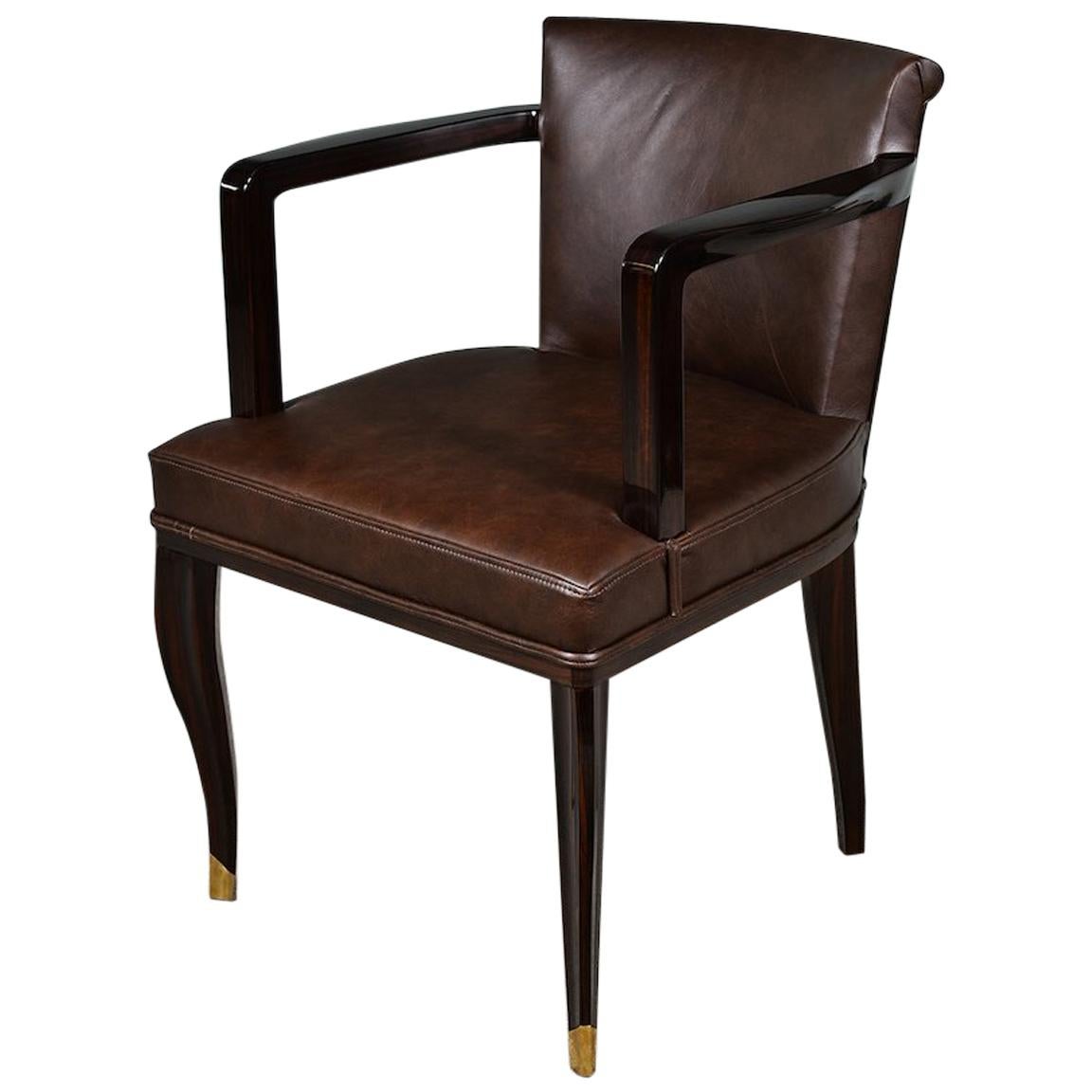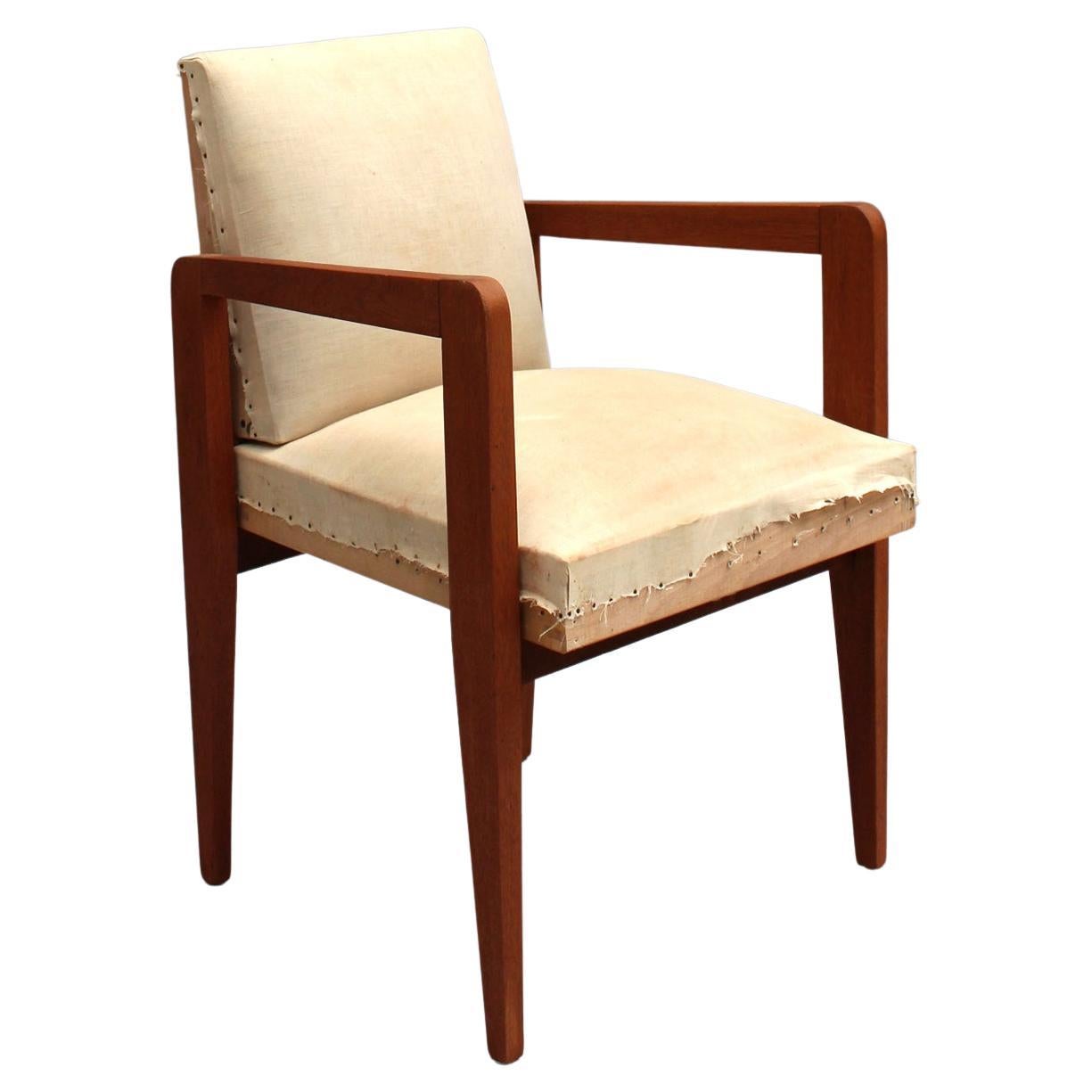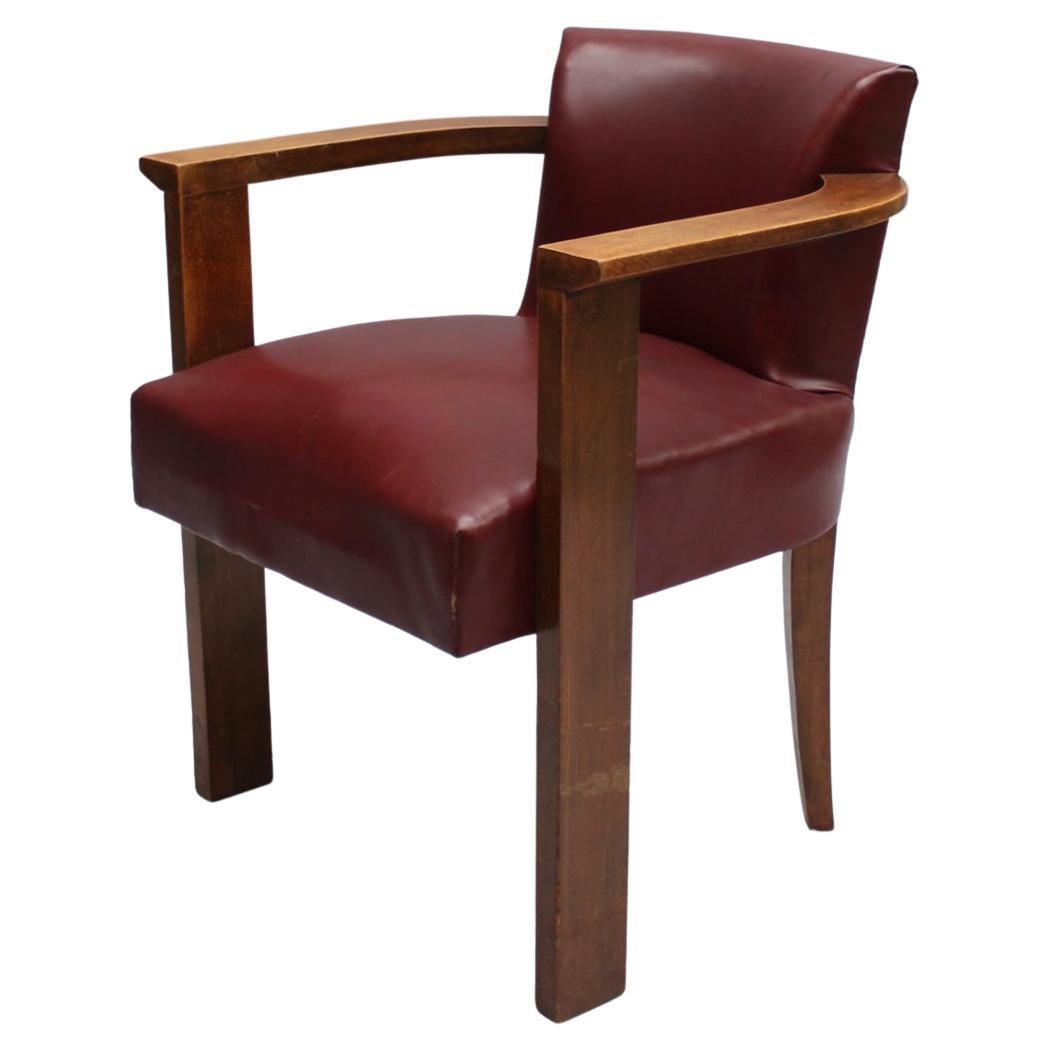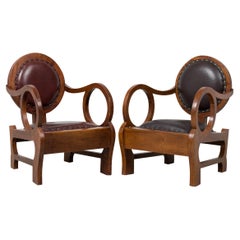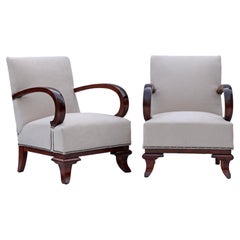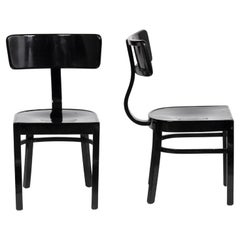
Art Deco Chair by Lajos Kozma, 1920s
View Similar Items
1 of 4
Art Deco Chair by Lajos Kozma, 1920s
About the Item
- Creator:Lajos Kozma (Designer)
- Dimensions:Height: 31.89 in (81 cm)Width: 24.02 in (61 cm)Depth: 22.05 in (56 cm)
- Style:Art Deco (In the Style Of)
- Materials and Techniques:
- Place of Origin:
- Period:
- Date of Manufacture:1920
- Condition:Wear consistent with age and use.
- Seller Location:Lábatlan, HU
- Reference Number:1stDibs: LU4060313520392
You May Also Like
- Pair of Hungarian Walnut & Distressed Leather Art Deco Club Chairs, Lajos KozmaBy Lajos KozmaLocated in New York, NYPAIR of similar Hungarian Art Deco club chairs with walnut frames featuring circular backs and armrests upholstered in distressed brown leather with brass nailhead trim, resting on f...Category
20th Century Biedermeier Armchairs
MaterialsMetal
- Pair of Art Deco Armchairs, Fully Restored, Attributed to Lajos Kozma, 1922By Lajos KozmaLocated in Lučenec, SKA pair of Art Deco armchairs, fully restored, designed by Lajos Kozma. These armchairs provide a very comfortable seating. Their clean and elegant look will uplift your room.Category
Vintage 1920s Austrian Art Deco Armchairs
MaterialsUpholstery, Beech
- Rare Lajos Kozma Art Deco Chairs, 1930s '2 Pieces'By Lajos KozmaLocated in Budapest, HUArt Deco steam-bent beech chairs designed by Lajos Kozma in the 1930s. They are rare and hard to find pieces in this size. The chairs are in good condition, but the varnish is partially worn and shows traces of usage. Hungarian architect and artist Lajos Kozma (1884 - 1948) was probalbly the most impactful representatives of Hungarian Art Nouveau...Category
Vintage 1930s Hungarian Art Deco Chairs
MaterialsBentwood, Beech
- Pair of Lajos Kozma Art Deco Brown Faux Leather Hungarian Armchairs 1930sBy Lajos KozmaLocated in Palermo, SicilyPair of Armchairs 1930s Hungary Art Deco 1930s Lajos Kozma The cone-shaped feet are curved at the back. Original old conditions.Category
Vintage 1930s Hungarian Mid-Century Modern Armchairs
MaterialsFaux Leather, Wood
$3,931 Sale Price / set20% Off - Desk Chair Style: Art Deco, France, 1920Located in Ciudad Autónoma Buenos Aires, CArt Deco desk chair Country: France If you are looking for a desk chair to match your desk, we have what you need. We have specialized in the sale of Art Deco and Art Nouveau and Vintage styles since 1982. If you have any questions we are at your disposal. Pushing the button that reads 'View All From Seller'. And you can see more objects to the style for sale. Why are there so many antiques in Argentina? In the 1880 – 1940 there was a grate wave of immigration encouraged by the periods of war that were taking place. 1st World War took place between 1914 and 1918 2nd World War took place between 1939 and 1945 The immigrants options were New York or Buenos Aires. Tickets were cheap and in Buenos Aires they were welcomed with open arms, as it was a country where everything was still to be done. Argentina was the country of new opportunities, labour was needed and religious freedom was assured, in many cases the of the family travel first until they were settled and then the rest of the family members join them. In the immigrant museum “Ellis Island Immigrant Building” in New York you can se the promotional posters of the boats that would take them to a new life. Between the years 1895 and 1896, Argentina had the highest DGP (gross domestic product) per capita in the world according to the Maddison Historical Statistics index, this situation arose due to the large amount of food being exported to European countries, which were at war. The Argentinean ships left the port of Buenos Aires with food, but they returned with furniture, clothes and construction elements, (it´s common to see this the old buildings of the historic neighbourhood of San Telmo, the beams with the inscription “Made in England)”, as well as many markets that were built in Buenos Aires, such us the San Telmo Market, whose structure was brought by ship and afterwards assembled in 900 Defensa Street. With the great influence of European immigrants living in the country, the children of the upper classes travelled to study in France, resulting in the inauguration of “La Maison Argentinienne”, on 27th of June 1928, in the international city of Paris, which hosted many Argentinians that were studying in Frace. It´s the fourth house to be built after France, Canada and Belgium, being the first Spanish-speaking one. Still in place today (17 Bd Jourdan, 75014, Paris, France). Many of the children of these wealthy families who attended international art exhibitions, museums and art courses abroad, took a keen interest in the European style. This is why Buenos Aires was at the time referred as “The Paris of South America”. Between the years 1890 and 1920 more than a hundred Palaces were built on Alvear Avenue the most exclusive avenue in Buenos Aires. Today some of these palaces have been transformed into museums, hotels and embassies. In the year 1936, the Kavanagh building was inaugurated, it was the tallest reinforced concrete building in South America. During 1994 the American Society of Civil Engineers distinguished it as an “international engineering milestone”, and it´s now considered a World Heritage of Modern Architecture. At the time was common to hire foreign architects such as Le Corbusier, who visited Buenos Aires/Argentina in 1929 and in 1948 he drew up the blueprints for a house built in La Plata City (which was declared a World Heritage Site). In 1947, the Hungarian architect Marcelo Breuer designed “Parador Ariston” in the seaside city of Mar del Plata. After an Argentinean student at Harvard University convinced him to come to Argentina. He worked on an urban development project in the Casa Amarilla, area of La Boca. The Ukrainian architect, Vladimiro Acosta, arrives in Argentina in 1928 and worked as an architect until que moved to Brazil. Antonio Bonet, a Spanish architect who worked with Le Corbusier in Paris, arrives in Argentina in 1937, where he carried out several architectural works and in 1938 designs the well-known BFK...Category
Vintage 1920s French Art Deco Office Chairs and Desk Chairs
MaterialsWood
- Pair of Lajos Kozma Attributed Armchairs in Oak and Dedar Jacquard, Late 1940sBy Lajos KozmaLocated in The Hague, NLThis striking pair of armchairs was produced in the late 1940s. The rare design is attributed to the Hungarian designer Lajos Kozma. Kozma was working in the specific Central Europe...Category
Vintage 1940s Hungarian Art Deco Armchairs
MaterialsFabric, Jacquard, Oak
